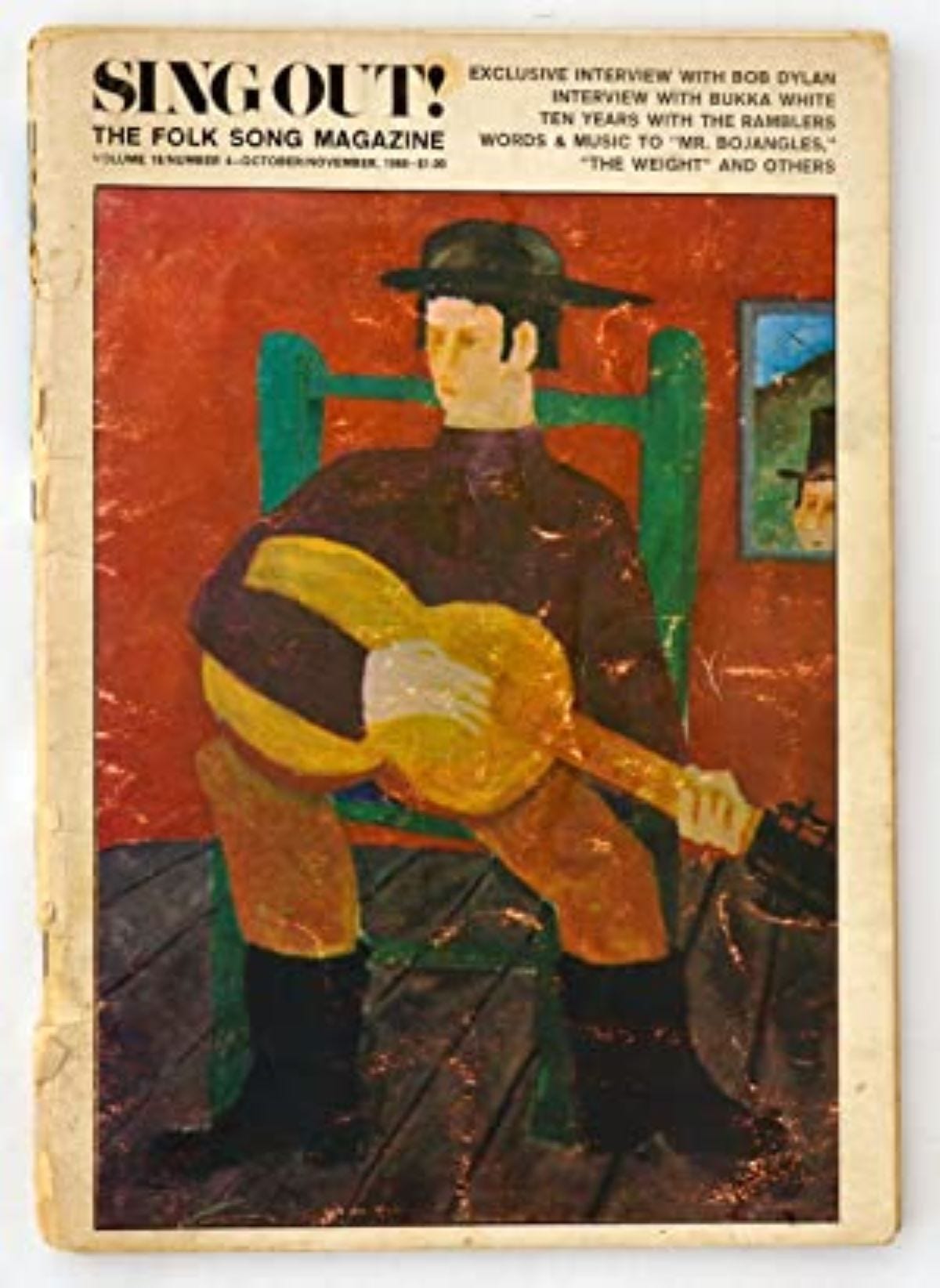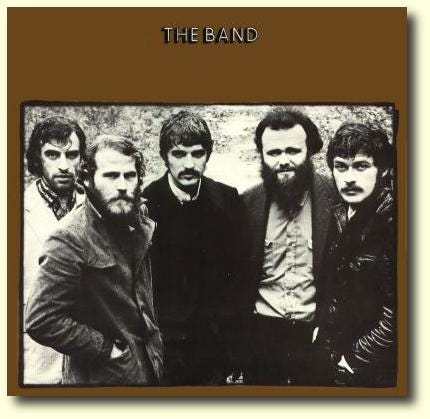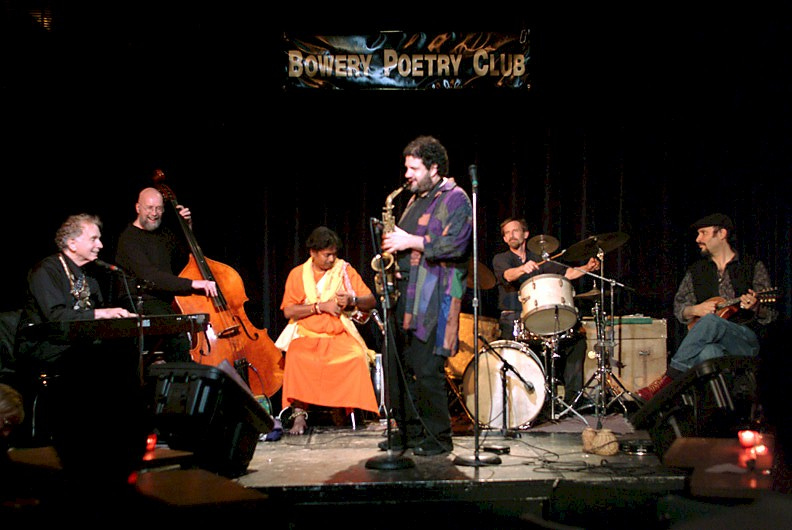So... Who Were Those Guys on the Cover of John Wesley Harding?
The Bauls of Bengal (and Bob Dylan): The Mirror of the Sky
Following his motorcycle accident on July 29, 1966, Bob Dylan, the great song poet, and “spokesman of his generation” (a dubious honor which he apparently loathed) suddenly dropped off the face of the earth at the peak of his popularity. While rumors raged claiming he was paralyzed or worse, brain-dead after crashing his bike, Bob holed up in the Catskill mountains with members of Ronnie Hawkins’ band, the Hawks, as they were still known and recorded a portfolio of quirky folk and blues numbers which later became famous as The Basement Tapes.
The next fall, Dylan, left his Woodstock-based musical crew behind and headed to Nashville where he recorded a stripped-down album of folk-rock parables entitled John Wesley Harding from mid-October through the end of November. Released two days after Christmas, in December 1967, the album cover, featuring a murky black and white snapshot of Dylan and an oddball crew in a drab grey frame openly defied the flower-power trend of its day. In stark contrast, the Rolling Stones had just released their psychedelic disasterpiece Their Satanic Majesties Request, (it’s a joke ok? I love that album!) which sported a blinding 3-D cover. Bob stood before an old gnarly tree, posing for photographer John Berg’s in the same suede jacket he’d previously worn on Blonde on Blonde, along with a local Woodstock stonemason named Charlie Joy, and two members of the Bauls of Bengal – Purna Chandra Das Baul and Lakshman Das Baul.
So, who were these mysterious guys in this iconic photograph? The Bauls of Bengal were a group of spiritual Indian folk singers/musicians encouraged to bring their ancient, ecstatic healing songs to America by the beat poet Allen Ginsberg who crossed paths with them in India. Their Vaishnava lineage of singing kirtan (devotional songs) and chanting the Maha mantra, (the Hare Krishna chant) stretches back to West Bengal for thousands of years. Staying at Dylan’s manager, Albert Grossman’s house in Bearsville, Bob and the Bauls were said to have recorded together.
"There is a great similarity between our music and his,” Purna Chandra explained, “Because the subjects are nature, love, human bodies, sorrow, which in fact are subjects common to all people everywhere.”
With the Band’s keyboard wizard Garth Hudson producing, the Bauls recoded The Bengali Bauls at Big Pink (released by Buddah Records, 1968). While Rick Danko and Levon Helm were invited to jam, the exotic, dizzying atmosphere proved too much for both of them. As Helm later recalled in his autobiography, This Wheels On Fire, “they were wailing in their own language, in their own world.” “I am the eldest son of my father and guru Purna Chandra Das, who knew [the spiritual teacher and leader of the Hare Krishna movement, A. C. Bhaktivedanta Swami] Prabupada well, and would sing for him in New York and London,” explained the Vancouver-based musician/composer Babu Kishan (aka Krishnendu Das Baul or Baul Guru). “Prabhupada was well aware of Purna Das’ lineage of Nityananda Mahaprabhu Baul. Long before any westerners knew of Prabhupada, he associated with my grandfather Nabani Das [a Sanskrit scholar and Vaishnava philosopher, tantric, musician and poet] at Gaudiyamath, in West Bengal.
“The Hare Krishna movement is based on Baul culture and technique,” Babu Kishan claimed. The original roots of kirtan and the Maha mantra came from the Baul’s meditation technique and connection to the supreme power. The music is so powerful, so peaceful, unique, and most energetic, ecstatic, and mystic through their deep philosophy, sadhna, music, dance and arts of healing. The Bauls play the [one string] ektara, the instrument symbolic of world peace, divine love, happiness, oneness.”
While the origin of the name “Baul” is uncertain, it can be traced as far back as the fifteenth century and is most likely Sanskrit for “divinely inspired” or “mad” or “insane.”
“Another take from the Vykula is ‘impatient’ or ‘eager.’ But impatient for what exactly?” Babu Kishan begged. “We hunger for spiritual union with Vishnu, Krishna, God. There is so much wrong information written in books. That is why now I am re-writing and publishing the true story of my lineage. Baul Sadhana or kirtan has been passed down by word of mouth for thousands of years. Now there are so many on the same journey, and singing kirtan, practicing Indian spirituality, doing Bhakti Yoga, playing, dancing and worshiping the same way the Bauls have for centuries!”
“I am proud to hold 5000 years of Baul lineage,” Babu Kishan said. “Music is mystical, from the soul. Classical music is too much about grammar that keeps you stuck within its border lines. I know lots of great sitarists, but unfortunately, they love to work with Bollywood because there’s lots of money there. There’s nobody anymore like Ravi Shankar or Nikhil Banerjee. I grew up with them as family. I was a student of Mahapurush Misra Gyanprakash Ghosh on tabla for a couple years. I like [Indian] classical music and I am well trained in it. But it never makes me happy. When I started to play in my own style, then I felt the beauty. I like people and musicians who play from their soul. I am a Baul, a free bird! The Bauls are the mirror of the sky. We believe in love and simple melodies that speak to people and help people.”
Let’s hope the Bauls’ ecstatic spiritual songs can continue to heal our wounded world now when we need it most.
Originally published in F-Roots (UK)








Well. Okay. Good to know. But the real story is: How did they end up on the album cover?
A trip.